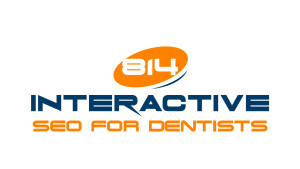You know you need search engine optimization in order to attract the right kind of attention for your practice, but how do you actually implement search engine optimization in a way that makes it both effective and manageable?
Most dentists run what is akin to a small business—they do not have a large staff or an extensive marketing budget, two things that many people think are necessary in order to create an effective SEO campaign.
The truth is that there are quite a few dental SEO tactics you can undertake that will make ranking your page fast, inexpensive, and easy.
1. Hire a professional.
If you’re not even sure where to start when it comes to SEO, hiring a professional can be the best way to get fast, affordable search engine optimization for your practice’s website.
Many people shy away from outsourcing this task because it seems easy at first blush, but then they find themselves under a mountain of complicated keyword research, link building, and content creation tasks that they simply can’t handle.
2. Fix bad SEO.
Getting rid of black hat or simply ineffective SEO strategies is the first step to creating a more effective campaign.
Some of the biggest offenders when it comes to dental SEO are irrelevant or useless content and a site structure that is not set up for SEO.
Delete bad content from your page and make sure your site’s URLs, CSS, titles, images, tags, etc. are structured in such a way that they are welcoming for both visitors and search engines.
3. Get backlinks.
Backlinks are one of the most powerful ranking tools you have in your arsenal.
But how do you get them?
Before your go to a backlinking service and pay them for placing backlinks around the internet, stop and think.
This is gaming the system and there is nothing Google hates more than those who try to game the system. Instead, create your links naturally, first by creating content that is likely to be shared and by guest blogging on other blogs.
4. Speed up your website.
The faster your website loads, the more likely your clicks are to actually stay on your page and convert into patients.
What can you do in order to make sure that they actually stick around and don’t just click away?
Start by using Google’s PageSpeed test in order to determine how quickly your website loads (on both mobile and desktop).
The tool will give you a number of fixes you can employ (or have your developer employ) in order to make your website load faster.
5. Consider utilizing Google+.
As Google’s very own social media, it makes sense that they would give a boost to websites that integrate a Google+ share button on their blogs and pages.
Make sure that you add the +1 button to your content (really, do this—Google loves it when websites do this) and make sure you post your content to Google+.
This is a great way to build social media links and is sure to give you some major points with Google’s search algorithm.
6. Target local traffic.
Unless you are some sort of boutique dentist office that does specialized work for patients from all over the world, you are probably looking for patients in one specific area.
Targeting that area through local SEO is a very easy way to rank your webpage highly.
Even just integrating your city or town name, along with your other keywords can be a great way to bring people to your website.
7. Take charge of your directory listings.
Most businesses today have directory listings on sites like Yelp.
If you don’t have one, create one. If you have one, claim it.
Make sure all of your information is correct and relevant, and then make sure that you have a link back to your website.
This is a high-quality backlink and yet another opportunity for you to have a link in the Google search results.
8. Figure out what kind of content is missing from your website.
What kind of information is going to help your patients (or new site visitors) choose your practice over others in the area?
Is it before and after pictures?
Is it testimonials from your patients?
Is it a detail description of exactly what you offer?
Is it online appointment making capabilities?
Probably yes to all of these things.
Having a blog is great, but if you are missing onsite content that your site visitors want to see, they may not ever make it to your blog.
9. Make your content shareable.
What makes content shareable?
Relevancy and how informative the content is.
This is especially important for your blog posts. If your content is shareable, people who read it will do your marketing for you, by posting a link to your post on their social media accounts.
You can easily make your content more shareable by asking your readers what kind of content they care about and what they would want to read.
10. Stay on top of algorithm developments.
Every few months, Google updates their algorithm.
You will likely not notice a shift in your rankings, as long as you are sticking to the tried and true, white hat methods.
Sometimes, however, Google changes something major that can seriously affect your ability to rank well.
Staying on top of planned changes and making the necessary adjustments to your strategy before the change hits can easily keep you on top.




